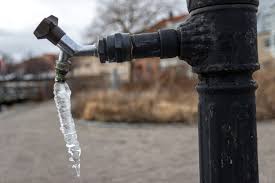Your Top Winterizing Strategies: Several Approaches to Defend Against Pipe Bursts
Your Top Winterizing Strategies: Several Approaches to Defend Against Pipe Bursts
Blog Article
The author is making a few good observations on the subject of How to Prevent Frozen Pipes in general in the article beneath.

All home owners who live in pleasant climates must do their best to winterize their pipes. It is something you need to do throughout fall before deep winter months really begins. Failure to do so can mean catastrophe like frozen, broken, or burst pipes. If the weather condition outside is frightful, here are some handy winterizing hacks to maintain your plumbing system shielded also.
Try a Hair Dryer or Warm Weapon
When your pipes are virtually freezing, your trusty hair dryer or heat gun is a blessing. Bowling hot air directly into them may assist if the warm towels do not aid dislodge any type of settling ice in your pipes. Do not use various other items that generate straight fires like an impact lantern. This can lead to a larger catastrophe that you can not manage. You might end up harmful your pipelines while attempting to melt the ice. And in the future, you may also end up shedding your home. So be cautious!
Open Up Cupboard Doors Hiding Plumbing
When it's chilly outside, it would certainly be handy to open closet doors that are masking your pipes. Doing this tiny trick can keep your pipelines cozy and also limit the potentially hazardous outcomes of freezing temperature levels.
Take Time to Cover Exposed Water Lines
One very easy as well as nifty hack to warm up frigid pipelines is to wrap them with cozy towels. You can additionally utilize pre-soaked towels in warm water, simply do not fail to remember to put on safety handwear covers to safeguard your hands from the warm.
Switch on the Faucets
When the temperature declines as well as it seems as if the frigid temperature will certainly last, it will aid to turn on your water both indoors and outdoors. This will keep the water moving through your plumbing systems. You'll finish up throwing away gallons of water this means.
Turn off Water When Pipelines are Frozen
Shut off the primary water shutoff instantly if you notice that your pipes are entirely frozen or almost nearing that stage. You will generally locate this in your basement or laundry room near the heating unit or the front wall closest to the street. Turn it off right away to stop further damage.
Do not neglect to shut exterior water sources, as well, such as your hookup for the garden home. Doing this will avoid extra water from filling your plumbing system. With even more water, even more ice will certainly stack up, which will ultimately lead to break pipelines. If you are unsure about the state of your pipelines this winter months, it is best to call a professional plumber for an evaluation. Taking this positive technique can conserve you countless bucks out of commission.
All house owners who live in temperate climates should do their ideal to winterize their pipelines. Failure to do so can lead to calamity like frozen, split, or ruptured pipelines. If the warm towels do not help displace any type of clearing up ice in your pipes, bowling warm air directly right into them may aid. Turn off the major water valve immediately if you discover that your pipes are entirely icy or nearly nearing that phase. With even more water, even more ice will certainly load up, which will ultimately lead to break pipes.
PREVENT YOUR PIPES FROM FREEZING THIS WINTER
A Leading Cause of Property Damage
When the weather is taking a deep nose dive into the cold dreary days, the risk of your pipes freezing and potentially bursting skyrockets. Unfortunately, during these cold dreary months, burst pipes are the most common denominator for property damage. The pipes that are most at the risk are those that are in areas where it is most cold in your home. For instance, pipes located in interior places such as basements, attics, and your garage. Unfortunately, that doesn’t mean that the pipes running through your cabinets or exterior walls can’t freeze. Good news, however, is that you can do things to help prevent pipes from freezing.
How to Prevent Pipes From Freezing
Once the temperature starts to drop during the winter, you should be taking the proper measures needed to ensure that your pipes stay warm and that there is circulation of water through them. Some steps that experts may recommend could go against your better judgement when it comes to saving water and heat. However, it would go without saying that when expenses are compared, damaged pipes could put a bigger dent in your wallet than a water bill.
What Can I Do?
Keep your garage door closed. This is very important, especially if you have water supply lines running through your garage. Open your kitchen and bathroom cabinets to allow warm air to circulate through them. Allow air circulation throughout your home. Keeping the interior doors open will once again allow the warm air to circulate inside your home. Ensure your thermostat is running the same temperature throughout the night and day. If you plan to be away from home during the cold months, set your temperature no lower than 55° F. This should provide enough heat to keep the pipes warm and prevent any remaining water inside the pipes from freezing. For more of a long-term solution, add insulation to attics, basement, and other crawl spaces around your home. By allowing your faucet to drip, it will alleviate pressure in the system. This is important because the pressure that is created between the blockage and the faucet can potentially cause the pipes to burst. Allowing the faucet to drip will prevent the pressure from building up, therefore keeping the pipes from bursting. Seal any cracks, openings, and crawl spaces around your home to prevent cold air from coming inside. This keeps your pipes-not to mention your home-warmer and less susceptible to issues caused by freezing temperatures. For the pipes in your home that are easily accessible, applying electrical tape to them might prevent them from freezing over. This is a quick fix, as you can apply the tape directly to the pipe. There are two options for heating tapes. One turns on and off by itself when it senses heat is needed. The other type of heating tape needs to be applied when heat is needed and removed when not necessary. If you have exposed pipes in your home, you can check this website to take a look at a few options that would be available at a shop near you.

We are very occupied with Winterizing Your Pipes and I'm hoping you appreciated the entire entry. Sharing is good. Helping people is fun. I cherish reading our article about Prevent Freezing and Bursting Pipes.
Act fast, call! Report this page